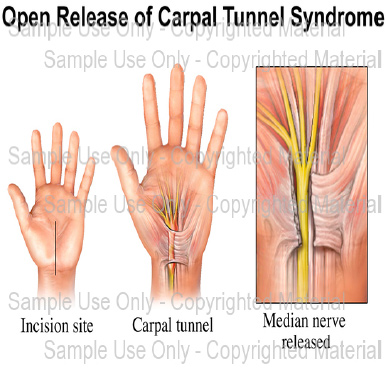What is a carpal tunnel release?
A Carpal Tunnel release is a procedure to free the median nerve which runs through the carpal tunnel in the wrist. It involves making a small cut down the front of the wrist and palm of the hand and dividing the band of tissue which is pressing on the median nerve. Once the nerve is completely free, the skin is closed with stitches.
My Anaesthetic
This procedure will require a Local anaesthetic.
See Local Anaesthetic for Your Procedure patient information sheet for information about the anaesthetic and the risks involved. If you have any concerns, talk these over with your doctor.
If you have not been given an information sheet, please ask for one.
What are the risks of this specific procedure?
There are some risks/complications with this procedure.
Uncommon risks include:
- Infection. This will need antibiotics.
- Bleeding. Bleeding is more common if you have been taking blood thinning drugs such as Warfarin, Asprin, Clopidogrel (Plavix or Iscover) or Dipyridamole (Persantin or Asasantin).
- Numbness and tingling in the fingers and thumb may persist.
- The operation occasionally does not work and needs to be done again.
- Damage to the tendons, which may require surgical repair of the tendons.
- Damage to the median nerve. This may require re-operation and nerve repair.
- Pain at the wrist when making a fist of leaning on the wrist.
- The surgical cut may cause changes to the sensation and colour of the limb.
- In some people, healing of the wound can become thickened and red and the scar may be painful.
Rare risks include:
- Increased risk in obese people of wound infection, chest infection, heart and lung complications and thrombosis.
- Death as a result of this procedure is very rare.


 Appointments
Appointments